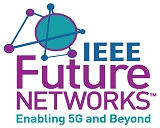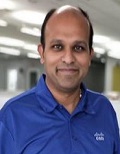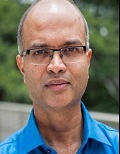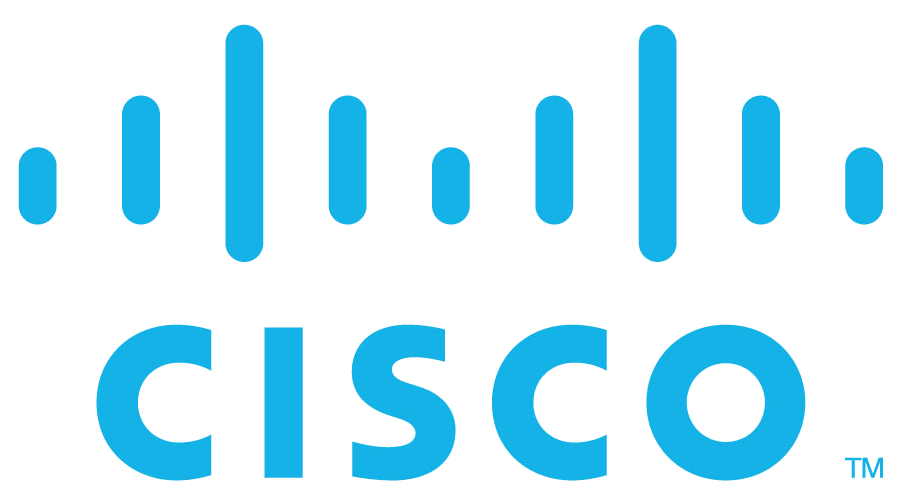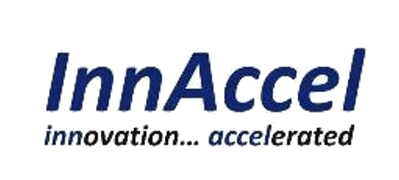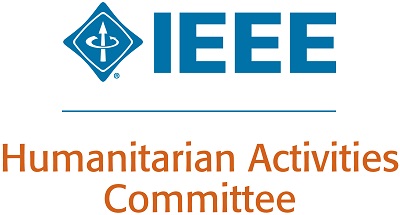Keynote Speakers
Carla-Fabiana Chiasserini
Politecnico di Torino, ItalyVisit Homepage
Recently, the deployment of vertical services at the edge of communication networks and the effective design of network slices have attracted a great deal of attention. Few real implementations however exist and several aspects still need to be investigated in this realm.
This talk will describe the NFV-based testbed that was developed within the EU 5G-TRANSFORMER project, implementing a road safety and a video streaming service at the edge of the network and leveraging heterogeneous wireless connectivity. We will present the main hurdles we faced, the solutions we found, and experimental results. Additionally, the talk will highlight some critical aspects related to efficient and automized service deployment in NFV-based systems, and how they can be modeled and optimized.
Carla Fabiana Chiasserini is Full Professor at Politecnico di Torino, Italy, and a Research Associate with the Italian National Research Council (CNR). She was a Visiting Researcher at UC San Diego from 1998 to 2003, and a Visiting Professor at Monash University in 2012 and 2016. She is a Fellow of the IEEE. Her research interests include 5G Networks, Mobile Edge Computing, Internet of Things (IoT), and Connected Vehicles. She published over 300 journal articles and referred conference papers. Currently, she serves as Editor-in-Chief of the Computer Communications journal and as an Associate Editor of the IEEE Transactions on Wireless Communications. Carla has been involved in may national and International research projects, either as a coordinator or a PI, including the EU H2020 5G-Crosshaul, 5G-TRANSFORMER, I-REACT, 5GROWTH projects. For more information, please refer:here.
Gerhard P. Fettweis
TU Dresden, GermanyVisit Homepage
1G was a great step creating the vision of ubiquitous voice telephony, but we needed 2G to deliver (like international roaming). 3G was a great step towards ubiquitous cellular data, but we needed 4G to fix the challenges. 5G will be an infliction point in bringing cellular to new applications. However, do we need to use the 5G system to understand what is really needed, and have to wait for 6G as a fix? And is this fix required to make the Tactile Internet a reality?
As we see 5G unfold, expectations on the economic and societal impact are very high. Many new opportunities shall emerge for new business opportunities. Besides Gb/s data rates, true NFV-enabled services, the Tactile Internet is the most highlighted promise of 5G, enabling remote control applications over cellular. We shall review opportunities and their technical requirements and some research results. This helps to build an understanding to detect missing pieces.
With the (mobile) Internet we engineers have shaped the political landscape. How can take on responsibility towards an envisioned “Digital Democracy”? It might be the next wild and open opportunity for entrepreneurship and change in company economics as well as politics.
Gerhard P. Fettweis F’09, is Vodafone Chair Professor at TU Dresden since 1994, and heads the Barkhausen Institute since 2018, respectively. He earned his Ph.D. under H. Meyr's supervision from RWTH Aachen in 1990. After one year at IBM Research in San Jose, CA, he moved to TCSI Inc., Berkeley, CA. He coordinates the 5G Lab Germany, and has coordinated 2 German Science Foundation (DFG) centers at TU Dresden, namely cfaed and HAEC. In 2019 he was elected into the DFG Senate. His research focusses on wireless transmission and chip design for wireless/IoT platforms, with 20 companies from Asia/Europe/US sponsoring his research. He also serves on the board of National Instruments Corp, and advises other companies.
Gerhard is IEEE Fellow, member of the German Academy of Sciences (Leopoldina), the German Academy of Engineering (acatech), and received multiple IEEE recognitions as well has the VDE ring of honor. In Dresden his team has spun-out seventeen start-ups, and setup funded projects in volume of close to EUR 1/2 billion. He co-chairs the IEEE 5G/Future Networks Initiative, and has helped organizing IEEE conferences, most notably as TPC Chair of ICC 2009 and of TTM 2012, and as General Chair of VTC Spring 2013 and DATE 2014.
Saravanan Radhakrishnan
Cisco, IndiaVisit Homepage
Security in the enterprise in a key requirement for running businesses today – it’s become a boardroom conversation in many companies. The recent increase in the rate and the severity of cyber-attacks has forced organizations across the board to rethink their security strategy and ensure data security at the highest levels. Almost 43% of all global companies have been experienced a breach and close to 66% take months or sometime even up to a year to recognize that they have been breached. We have seen many high profile attacks in recent times, the impact of which is profound – major sites going down because of DDoS attacks, customer credit and debit card information being stolen, millions of email accounts being swiped, insiders hacking and accessing sensitive information, and so on. It’s become extremely important for the network to intercept and secure the enterprise. This talk will focus on the ways the network can be leveraged to achieve this outcome.
Sarav Radhakrishnan is a 20 year Cisco veteran whose worked on a number of products and solutions during his tenure in Cisco. Sarav is an expert in the enterprise security space and he is driving a number of initiatives that help secure the enterprise by combining the power of the network and the security portfolio. Sarav is also an architecture lead for the highly profitable catalyst switching portfolio while also being a linchpin in setting product and technology direction across a wide variety of cross-cutting initiatives in Cisco. He is also a lead investigator in Cisco’s pioneer award winning encrypted traffic analytics. He has worked on a number of innovations across the enterprise portfolio. He’s current research and development interests include enterprise security, wireless, LiFi and machine learning.
Sriram Rajamani
Microsoft Research, IndiaVisit Homepage
I will give a perspective on rigorous design and verification, by reflecting on some design and verification efforts I have worked on with my collaborators over the years. I will recall our experiences using
- SLAM and Static Driver Verifier: A program verifier applied to check if Windows drivers satisfy safety properties,
- P: A design language for asynchrony, used to model and do code-generation for asynchronous systems,
- Trusted Cloud: a system for confidential computing in Azure, and
- HDEF: a system for heterogeneous extraction of entities from heterogeneous data by combining program synthesis and machine learning.
I will draw lessons learned from these experiences both from foundational and practical perspectives.
Sriram Rajamani is Distinguished Scientist and Managing Director of Microsoft Research India. Sriram is an ACM fellow, INAE fellow, and winner of the Computer Aided Verification Award. His work has impacted both academic and industrial practice in software verification, design and cloud security. He is currently working on combining program synthesis and machine learning.



